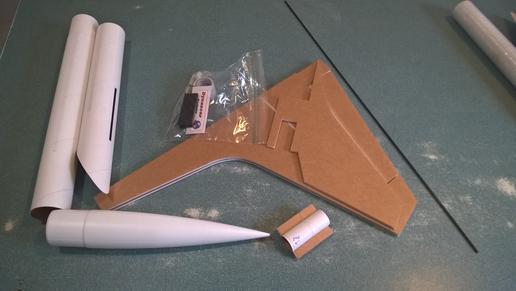
Radio Controlled Rocket Glider Kits
Apply fillets to the vertical stab and wing joints
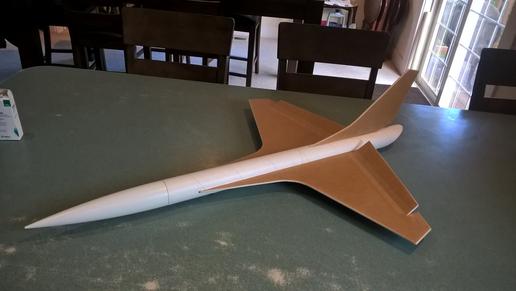
Set the spar in place and apply more glue over the spar.
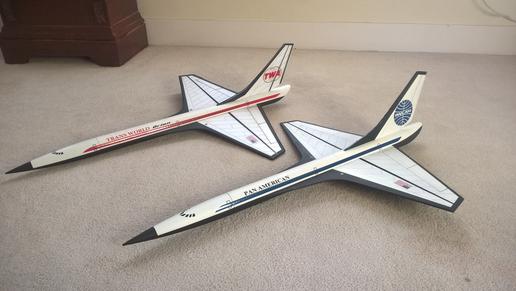
Cut the holes for the T nuts
Let the glue become tacky
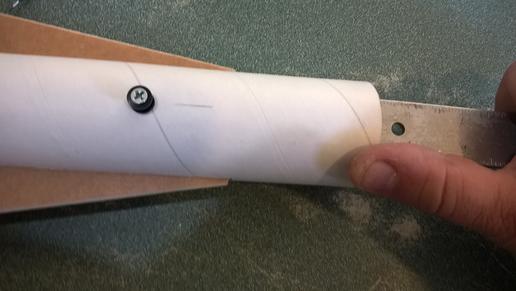
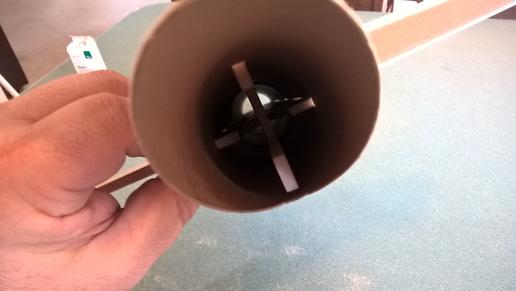
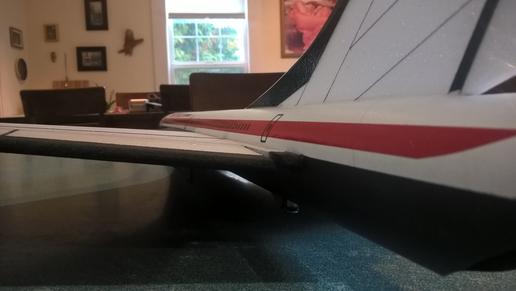
Apply glue to the root edge and the front piece of the vertical stab and press into place, then pull apart.
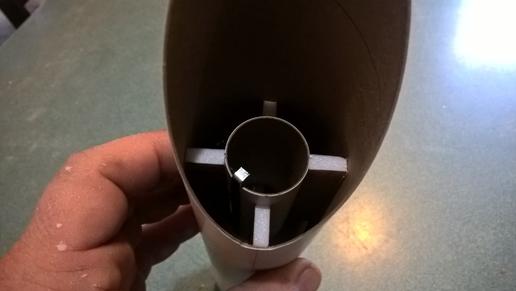
Install the front and rear rail buttons
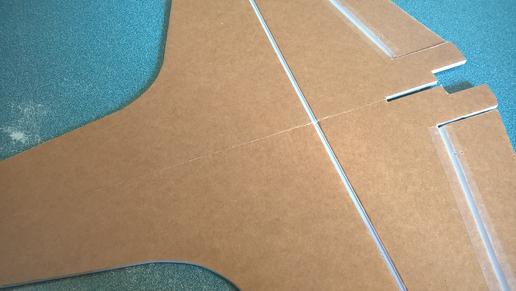
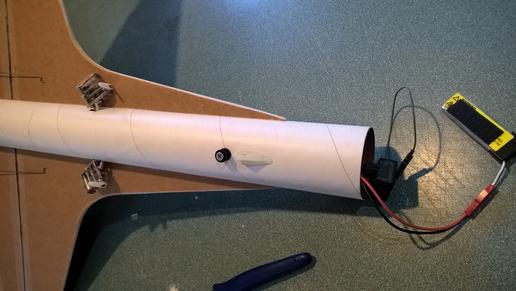
up elevator
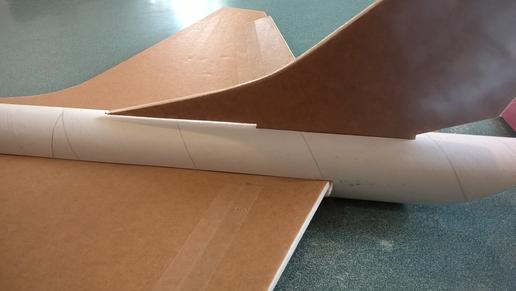
When the glue is tacky lay the wing flat to glue the joint
Install the two pushrods and horns, note the pushrod is closest to the fuselage.
Cut the wing slot
Glue the wing joint
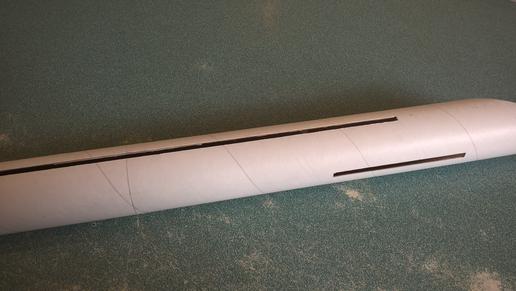
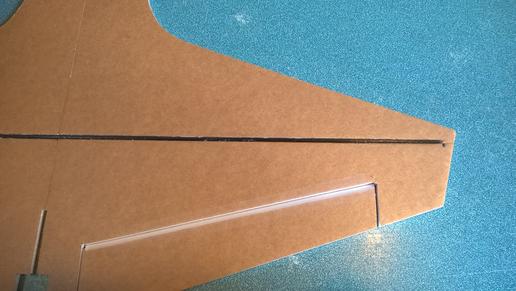
Test fit the vertical stab
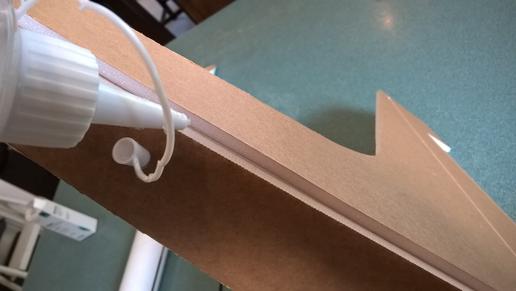
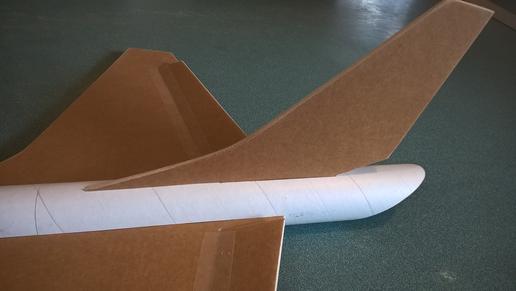
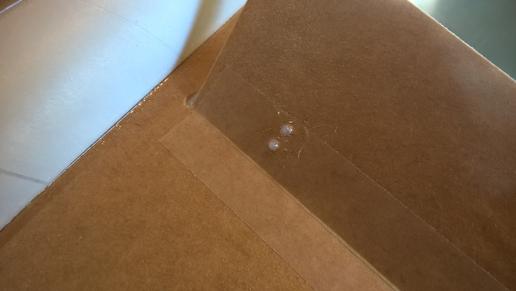
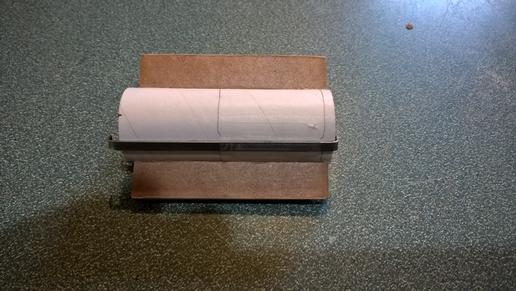
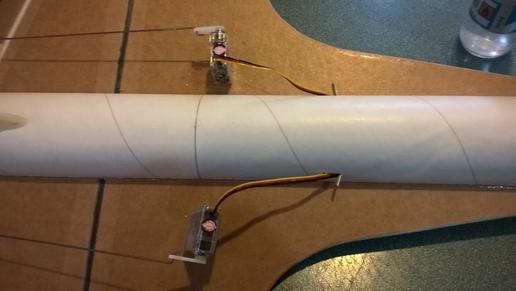
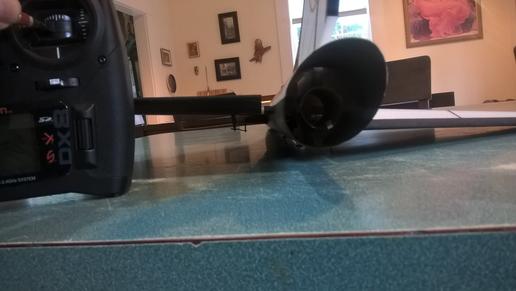
Completed model
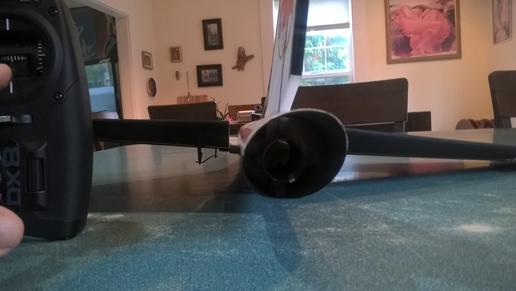
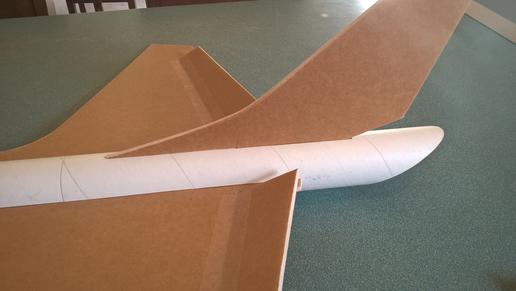
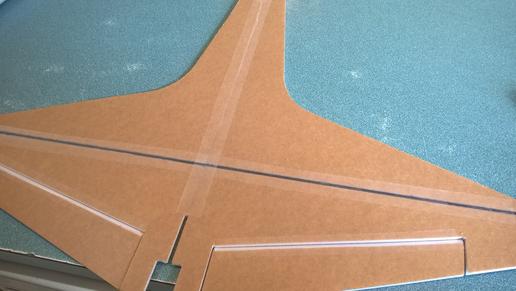
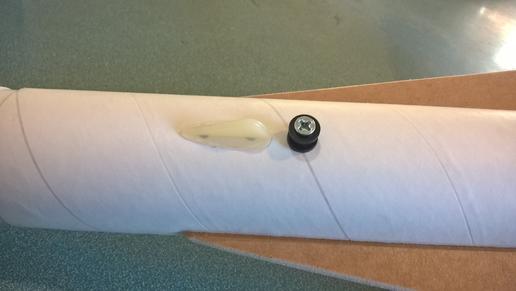
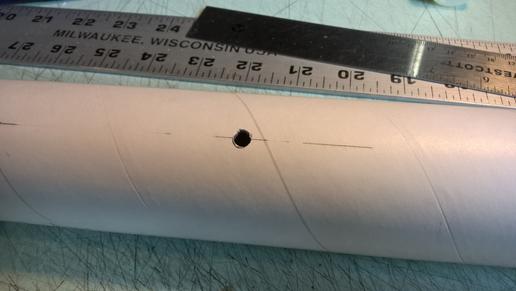
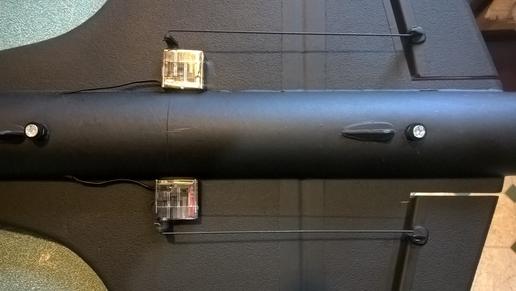
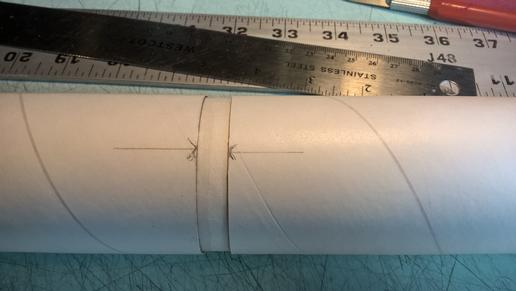
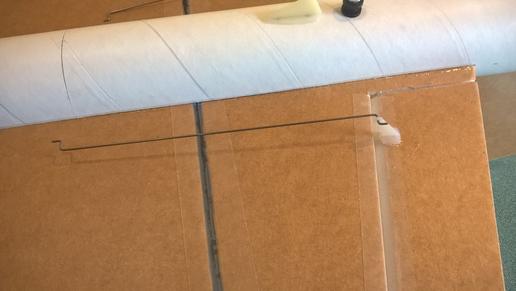
left aileron
Apply glue to the spar and spar slot and let dry for a few minutes
Test fit the wing in the slot.
Orion Starliner Rocket Glider Kit
The Orion Starliner RC Rocket glider kit has the wing shape of the Orion III shuttle from 2001 A Space Odyssey, with an added vertical tail for stability. It comes with a plastic nose cone, 2" white tubing for the body and water resistant paper covered foam board wing and tail surfaces. Construction is very simple and takes about an hour and a half. The only hard part on this model is cutting the slot for the wing after you assemble the body tubes, however the slot locations are pre-marked for you. You will need two 10 gram type servos, two 6-12" servo extensions, a receiver, and a small 500mah single cell lipo battery. You will need a transmitter with delta or elevon mixing. You will need Bob Smith Foam Cure or Beacons Foam Tac glue for assembly.
Please refer to the notes on items needed for completion and flying, then read the instructions completely before starting assembly. The assembly photos are for general reference but may not include every step in the instructions. If you want hardcopy to work from, all you have to do is click/drag/select and copy all of the text below the photos, open word and paste with "keep original format" and it looks exactly like it does online then you can print it.
CG location for rocket flight: 8 7/8" forward of the rear end of the wing at the root. This will be approx 1" ahead of the joint between the two body tubes.
Welcome to the world of rocket boosted radio control gliders. This is not a model for a novice RC pilot, but anyone who is comfortable with RC flying of a medium speed model should be fine. Read through the instructions, look at the photos and be sure you understand the step before commiting to cutting or glue.
Orion Starliner Rocket glider instructions
Identify all pieces, the kit should contain:
1 wing taped together
1 Nose Cone
1 wing spar(carbon fiber)
2 pushrods
1 vertical stabilizer
2 small foam strips for centering the motor mount.
2 control horns
2 Body Tubes
Motor mount
Velcro(for battery and rx/bec attachment)
2 Rail buttons with t nuts/screws or 1 Launch lug
2 landing skids
3M blenderm tape
Lead weight
Spare foam board(for testing paint, glue, and sanding the edges to see how it behaves)
Notes before starting:
You may use 220-320 grit sandpaper and a sanding block to slightly round the edges of the foam board if you prefer before gluing the wing and vertical stab in place. Do any sanding before assembly. It is suggested you use a thin coating of foam cure glue on all exposed foam edges before painting. This will help seal and prevent the paper covering from peeling.
Glues:
Epoxy is not needed in this model. Weight is critical and the model is designed for the thrust and flight loads. Weight in the rear end is bad and will require additional weight in the front of the model. Epoxy may not stick to the paper foam covering. CA will melt the foam and foam safe ca will not stick to the paper covering so are not recommended.
This model uses a special water resistant paper coated foam board from flite-test. The paper covering is very slick and the only adhesive recommended for assembly of the wing to body is Bob Smith Foam Cure or beacons Foam tac. Hot glue will add too much weight. Foam Cure can be used two ways, like a contact cement, and like a normal glue. We will use it both ways. If you have a butt joint, you can apply the foam cure to both sides, touch them together, then separate them and let them dry for a minute or two till you can touch without sticking to your finger. Then you can press the two pieces together and they will be permanently bonded immediately. Or you can apply glue to one side and press the pieces together, or use it to apply a fillet. This will take time to cure and must be held or taped in place while it cures. The foam cure develops a skin quickly, so when applying to the wing edge or making a fillet, do one section at a time, wipe with your finger and immediately remove excess or strings with a paper towel.
Assembly:
- Body Tubes. One tube will have a coupler pre-glued in place. Glue the other tube onto the coupler, make sure the small arrow marks are aligned on the two tubes, that will ensure the wing slot mark and rail button marks are properly aligned. Use glue sparingly, as you will need to cut through the coupler to cut the wing slot.
- Glue the two 2.75" long foam strips onto each side of the motor tube on the two black lines using foam cure glue as you would a contact cement. These help center the motor tube in the body tube once you insert it into the vertical fin slot.
- Using an exacto, cut out the hole in the rear and front rail button locations marked on the bottom of the tubes to fit the t nuts. Insert the T nuts from the inside of the tube and install the T nuts, rail buttons and screws, don't tighten them down really hard, just snug enough to not come out. Make sure they are aligned and don't bind on the rail. The rail buttons are inset to the right depth so that they do not interfere with the vertical fin or nose cone shoulder. It may be helpful to set the t nut on a ruler, and insert it into the body tube, then press into the hole from the inside then start the screw and rail button pieces. It may be helpful to have someone hold the tube for you. Do this step no as it is not possible to do once the wing and vertical stab are in place.
- Cut the slot for the wing once the coupler joint is dry. I used a piece of angle aluminum to do this as it won't slip while I'm cutting. Take your time and be careful. Make sure to look at the thickness of the wing and cut the slot to just fit the wing thickness, double check the pre-marked lines before you cut for width and length and adjust as needed. Use the spare piece of foam sheet to test the slot, it should go in easily but not be too loose. You can sand the slot for a fine fit if needed.
- Unfold the wing and apply foam cure to the taped joint, then flatten the wing, and then bend it open again and let dry for a few minutes, then flatten the wing out again to bond the joint.
- Glue the wing spar in the pre-slotted area on the bottom of the wing with foam tac by applying to the slot and spar, then letting the glue dry for a bit then inserting the spar. You can also apply some foam cure over the spar and wipe it with a paper towel to remove excess. Tape over the spar and the wing joint with the included blenderm tape.
- Test fit the wing in the slot, if it is snug, sand or trim as you don't want it to drag/damage the wing as you are inserting it.
- Test fit the veritical stab into the slot carefully so as to not bend/damage the slot for the motor tube. The vertical stab slot will go through the slot in the wing and help center the wing. Look at the outside of the body tube at the bottom, there is a line that will help you make sure the vertical stab is straight. Once the fit is right, remove the vertical stab and apply foam cure to the bottom of the fin tab and the bottom of the forward part of the stab that glues to the body tube. Insert the vertical stab into the body tube and press in place, the pull it away from the body tube slightly and allow to dry for a few minutes, then carefully press into place in the inside of the body tube and the top of the body tube, make sure the part that glues to the top of the body tube is straight.
- Make sure the wing is centered at the front of the body tube and apply a fillet of foam cure on each side of the joint.
- Once the glue has set, apply some foam cure to a barbecue skewer or dowell and put some fillets on the top inside of the vertical stab/body tube joint and the bottom of the fin tab joint.
- Test fit the motor mount into the slot in the fin tab. Make sure it fits, or sand very carefully. Apply glue to the top and bottom of the vertical stab cutout and insert the motor tube till it hits the front of the slot. The two tabs you glued onto the motor tube should be horizontal and help center the motor tube. NOTE*** the motor hook is glued at the front, make sure you have the front forward when you glue it in place. Use a skewer to apply light fillets of foam cure to the motor tube/vertical stab joint. You don't need a lot of glue, as the motor can't really go anywhere forward as it hits the fin tab at the front.
- Apply foam cure to each of the control horns and press them in place in the bottom of each control surface into the pre-made holes, then remove and let the glue dry for a few minutes. Note the control pushrods go on the inside of each control horn nearest the body tube Press the control horns in place on the bottom of the surface, the holes face forward and the pushrod should be closest to the body tube. Apply a fillet around the control horn and the top of the prongs on the top of the wing with foam cure.
- Install a landing skid just ahead of each rail button. Use a drill or tool to make starter holes for the prongs. Make sure they are aligned with the buttons and don't drag on the rail, these help prevent button damage when landing. Use CA+ or foam cure to glue them in place. Make sure the forward rail button prongs don't interfere with the nose cone shoulder.
The basic construction is now complete.
Radio Installation
Note: Your radio needs to be configured for Delta mixing, this means that the servo arms will move the same direction during elevator stick movement and opposite for aileron stick movement. Connect your servos to the receiver one in the aileron connection and one on the elevator connection and apply power. Use a servo arm at least 9/16” long and with holes small enough that there won’t be slop with the pushrod wire when installed. I use the hole furthest out on the servo arm, to maximize movement. On some servos there are a long two-ended servo arm, you can trim off one end if needed to get sufficient length. Zero out any trim settings on the transmitter. The model once the motor has burned out is nose heavy and flying wings lose pitch authority when nose heavy so you want as much up elevator travel for trim/flare as possible.
- Connect a servo to each pushrod. If the pushrod is too tight, you can use twist an exacto knife in the servo arm hole to make it larger, but be careful and do not make it too large. Once connected, tape each servo in place so that the control surfaces are centered. Flip the model right side up and look at it from the rear. Moving the transmitter stick back(up elevator) should move both elevons up. Moving the transmitter stick to the right should move the right elevon up and the left elevon down. If you can’t get the servo reversing to give you the right polarity try swapping aileron/elevator inputs to the receiver or turning the servos over and swapping the servo arms to the other side of the output shaft. If that is correct, continue.
- Flip the model upside down and supported. The servos may be attached to the model using double back servo mounting tape(not included) or by directly gluing the servo to the wing with foam cure. Double back servo tape can loosen over time and with exposure to heat, I prefer to glue the servo in place. With the radio still on, put a moderate amount of glue on the servo, being careful not to get any near the output shaft. And set it in place on the model keeping the control surface centered, then remove and let dry for a few minutes. Do the same to the other side. Make sure the glue is set before continuing. Press each servo in place keeping the control surface centered. The servo wire should point toward the front of the model and the servo should be butted next to the body tube. Apply a fillet of glue around the servo/wing to help secure it and let it cure.
- Attach a 6"-12" servo extension to each servo.You just need to be able to route the wire to the front of the tube to attach it to the receiver.
- Make a 1/8" wide by 1/2" long slot in the body tube on each side approx 2.5" ahead of the body tube joint and pass the wires through to the inside and toward the front. On my model I just made a U shaped cut, folded the cardboard forward, inserted the wire then folded the cardboard back over the slot/wire. I then glued the cardboard tab in place. See photo for more clarity.
- Attach the servo wires to the receiver and make sure they are going the right direction.
- Flip the model back right side up. Make sure the control surfaces are centered, use trims if needed. Now measure the control surface movement. Full elevator movement should be 7/8” in each direction, aileron movement should be 1/2" in either direction. Since the model will be nose heavy, extra elevon movement helps to give sufficient authority during glide.
- If you have a flap/elevator mix you can program up elevator to a switch setting. The model needs approximately 1/4” of up elevon during glide and 1/8" of down trim for boost. If you can’t set the up elevator trim to a switch on your radio you’ll have to manually put in boost and glide trim which is hard to do while flying the model.
- Use the included Velcro to attach the receiver insde the body tube just against the front of the wing. This allows you to be able to remove and replace the receiver if needed for repairs or for removing the servo wires.
- I attached the battery inside the nose cone on the shoulder with velcro.
- Insert your heaviest loaded rocket motor into the motor mount
- Support the model at the balance point indicated for boost. I use two pencils with the eraser pointed up and held in place with a small hand vice. Place the model upside down on the pencil erasers on the balance point indicated above. Use pieces of the included lead weight as far forward into the tip of the nose to balance it, or in the tail as needed. Glue the lead weight in place so it does not shift during flight. Do not try to fly the model too nose or tail heavy. Remember, a nose heavy model flies poorly, a tail heavy model flies once
- Seal the edges of the exposed foam with foam cure/foam tac. The foamboard is slick and needs to be scuffed with 320 grit sandpaper or the paint won't stick well. Don't paint too close to the board to minimize solvents affecting the foam board. If you have to mask over the paint, you need to use very lightly tacky tape or you risk pulling up the paint. Likewise when applying the decals you need to position them correctly the first time, if you need to adjust them and pull them off you risk pulling up the paint and runing the decals. Use the spare foam included in the kit to test your paint. Paint lightly as gliders like to be light weight. I can only recommend testors/model master enamel spray at this time, others I've tried soak through and delaminate the paper/wrinkle the finish. I recommend flat colors as they dry faster and the surface imperfections of the paper covering aren't as noticable.
- I used the decals from Stickershock23 to finish my model. With the vinyl from stickershock23 it helps once applied to use a hair dryer on hot to soften the material and then push it down onto the model with a towel. It helps it conform and stick much better, especially on painted surfaces. Stickershock has Pan Am and TWA logo schemes available, or can do anything custom.
- You can use a silver or black fine line sharpie to add panel lines if desired.
- Re-install the receiver and battery
Flying: See the Instruction/Information link at the top for flying instructions. Be ready on the first few flights to keep the model straight till you have the trims set perfectly for boost and glide.
Install the front skid
Join the two body tubes aligning the arrow marks.
right aileron
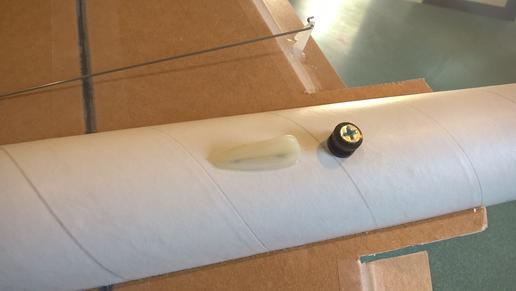
Pull the servos back toward the rear and install them using the foam tac glue so that the control surfaces are neutral. The servos should be against the body tube with the control arm toward the wing tip.
Completed models with stickershock markings
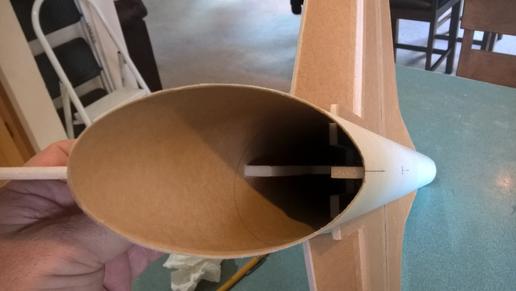
Completed model
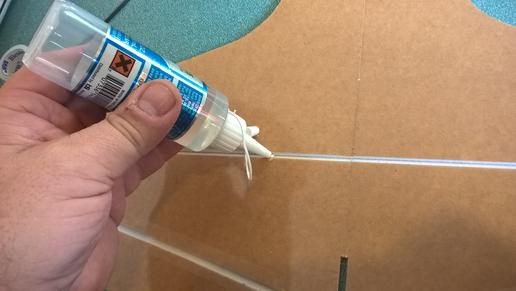
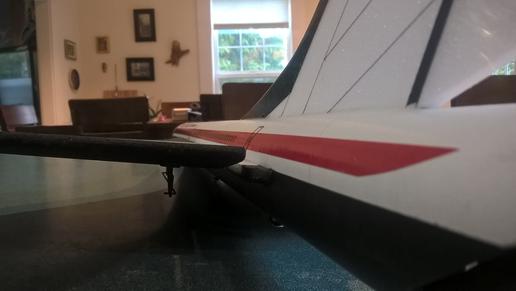
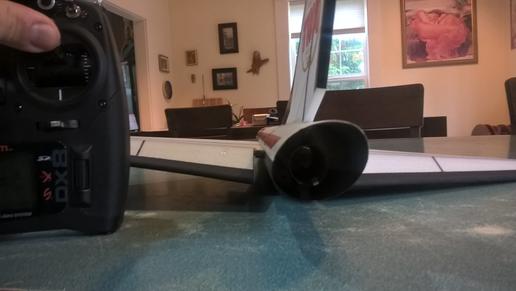
glide trim
down elevator
Press the vertical stab into place
Install the motor mount
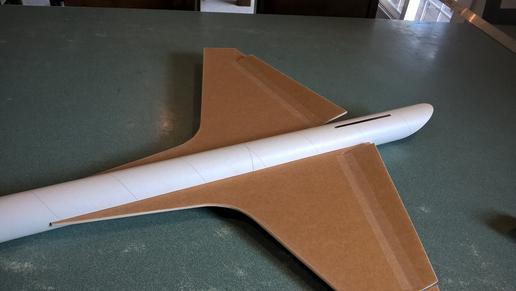
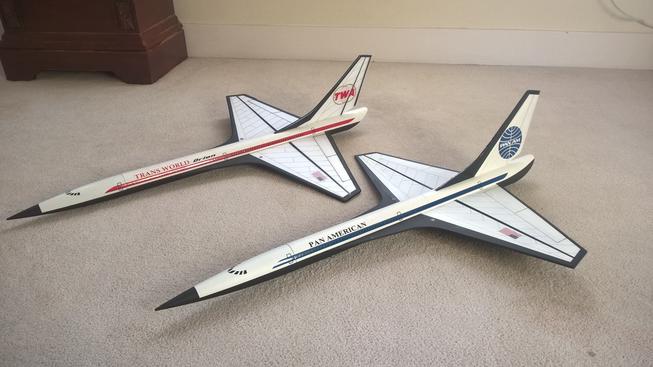
Kit parts
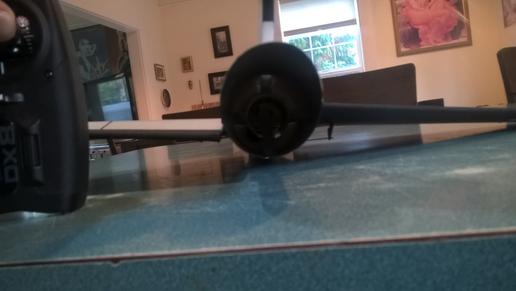
Tape over the spar and wing joint.
Install the rear skid
servos installed
Cut the two slots to insert the servo wires toward the front and connect them to the receiver
boost trim
Apply glue on the top prongs to lock the control horn in place.
Glue centering pieces onto the motor mount on the lines marked
